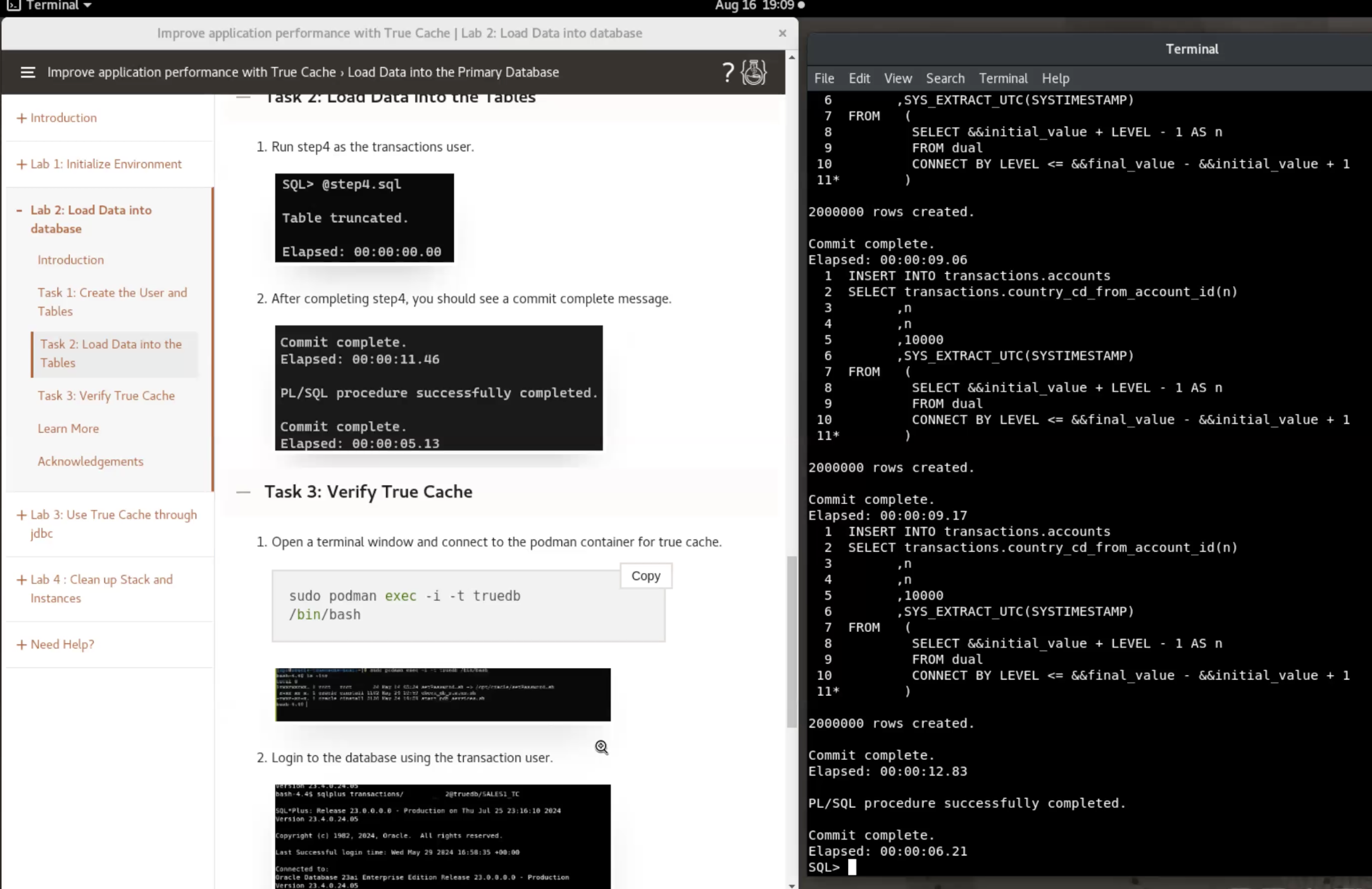For those that are new to LiveLabs – Oracle LiveLabs provides an excellent opportunity to easily explore various labs and technical workshops for Oracle’s tools and technologies. LiveLabs is completely free! To reserve a workshop, simply log in with your Oracle (oracle.com) account. Each LiveLabs reservation provides a self-contained environment to run the workshop. You can learn more here: https://livelabs.oracle.com/
We are happy to introduce you to our latest hands on livelabs, for our very cool new feature in Oracle 23ai – Oracle True Cache. This new workshop will only require about an hour of your time. So, jump right in and don’t hesitate to give this technology a spin which can be very useful in your journey with databases and applications!
You may be wondering what is Oracle True Cache? Read on.
What is Oracle True Cache?
Oracle True Cache is an in-memory, consistent, and automatically managed cache for Oracle Database. True Cache is a SQL cache as well as key-value (object or JSON) cache for the database. It caches all Oracle database objects and types. True Cache is a fully functional, read-only replica of the primary database, except that it’s mostly diskless. One of the most awesome features of True Cache is that it is automatically managed, saving application developers from having to manage the cache in their caching tier, and saving developers from having to worry about managing cache consistency or time-to-live of items in their cache. This is all managed and truly makes the lives of application developers so much easier!

Oracle True Cache provides several business benefits related to application development and performance.
- Improves scalability and performance by offloading queries from the primary database.
- Reduces application response time and network latency by deploying True Cache closer to the application. This especially benefits situations where a database is in a different location than the application due to data residency requirements.
- Creates a large, in-memory storage area by dividing data across multiple True Caches. The total size of the cached data across all True Caches can be much larger than it would be for a single primary database or cache.
- Automatically maintains the cache contents.
- Simplifies development and maintenance by being transparent to the application.
There is a lot more to it and please read this blog to get a good understanding of Oracle True Cache and the use-cases.
Now, let’s get to the LiveLabs workshop for Oracle True Cache.
What’s in the workshop?
This is an introductory workshop to Oracle True Cache where you can get a feel for how True Cache can be used to scale reads even without partitioning your data! True Cache can help offload reads from the primary – thereby alleviating the primary database from becoming a bottleneck (this is a critical aspect to many customers and organizations). This also allows you to scale your workloads more efficiently.
This workshop is based on a demo application on a compute instance which is connected to a primary database configured with True Cache. The demo application is a java program using the Oracle 23ai JDBC driver. It simulates a high number of transactions for the primary database and demonstrates how offloading the read queries to True Cache helps in application performance (you can see the read only transactions per second which is a good indicator that shows the throughput gain).

The instructions in the LiveLabs are easy to follow along. It shows you how to setup the environment, initialization steps, and load data into the database. There is guidance on how you can use True Cache through JDBC, and see a glimpse of the power of using an automatically maintained cache in front of your database.
Do try it out and also read more about Oracle True Cache in the documentation section and see for yourself how it can greatly benefit your applications. Oracle True Cache helps with relieving load on your primary database, providing higher availability for your systems, and better cost management for your enterprise.
